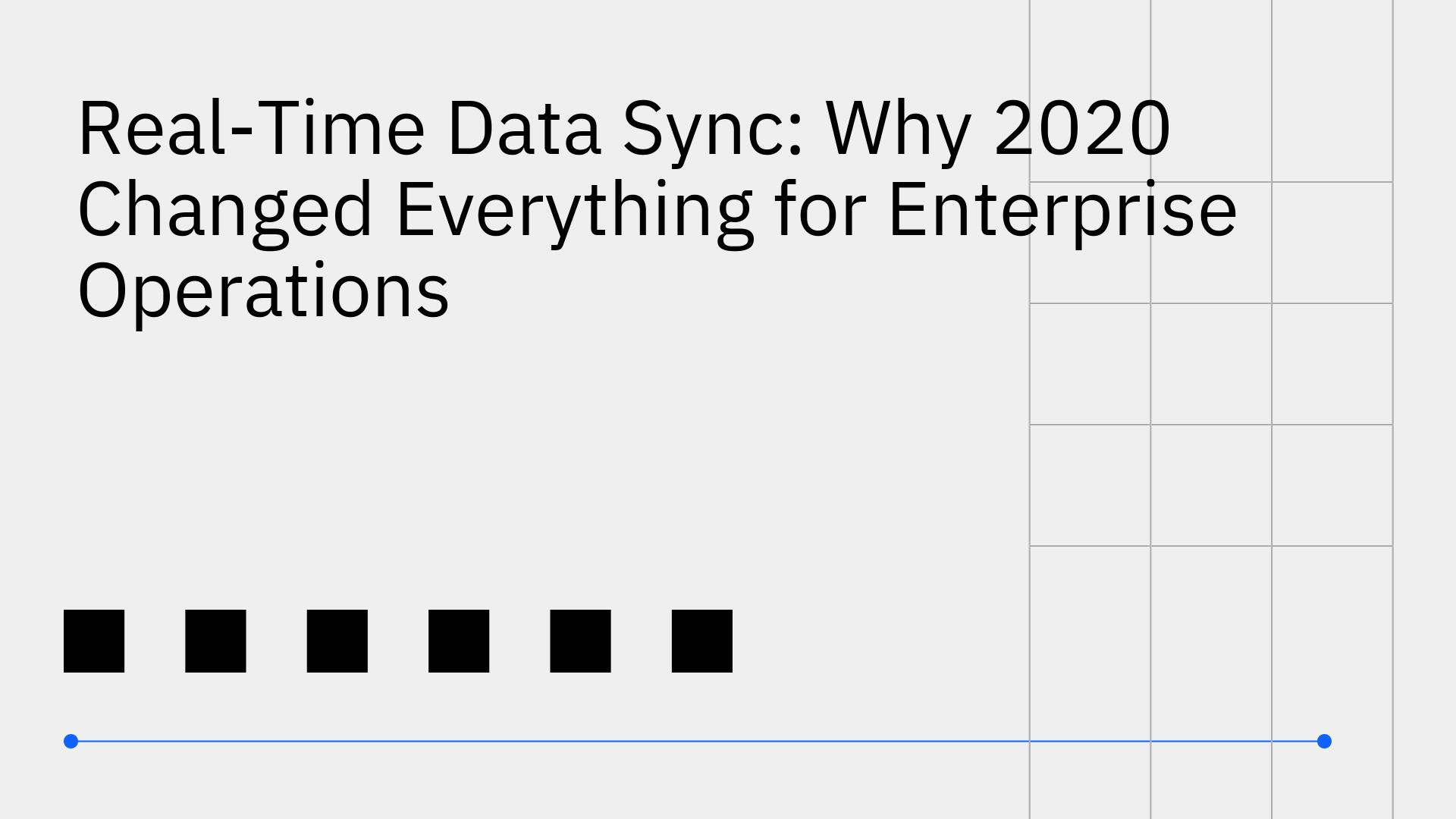
Bad data costs companies $12.9 million annually. Knowledge workers waste 12 hours per week chasing information across disconnected systems. 73% of customers must repeat information to different representatives within the same company. These aren't just statistics—they're symptoms of a fundamental problem that reached its breaking point in 2020.
The year 2020 marked a watershed moment when real-time, bidirectional data synchronization shifted from technical curiosity to operational imperative. This transformation wasn't driven by a single breakthrough but by a convergence of business pressures, technological maturation, and economic shifts that made traditional batch-oriented data integration actively harmful to business competitiveness.
The Extract, Transform, Load (ETL) paradigm served enterprises well for decades. Born in the 1970s when storage was expensive and processing power finite, ETL operated on one assumption: data could wait. Nightly batch jobs moved information from operational systems to data warehouses where analysts ran reports days or weeks later.
This approach worked when business moved at the speed of quarterly earnings reports. Modern business operates at the speed of customer expectations—measured in milliseconds, not months.
The traditional approach created:
COVID-19 exposed data infrastructure gaps as existential threats. Organizations forced to operate remotely overnight discovered their data silos weren't just inefficient—they were dangerous.
Healthcare systems needed real-time patient data across facilities. Retailers required instant inventory visibility across channels. Financial institutions had to detect fraud patterns immediately, not days later.
The statistics reveal the transformation's scope:
2020 witnessed cloud data platform maturity that revolutionized real-time sync economics. Snowflake's September IPO validated an entirely new data architecture approach. Organizations gained platforms serving as both analytical engines and operational hubs.
The economics shifted dramatically:
Modern cloud warehouses separated compute from storage, enabling elastic scaling that made real-time processing economically viable for mainstream adoption.
By 2020, a standardized toolkit crystallized:
This stack had one fatal flaw—unidirectional data flow. Data entered the warehouse but couldn't return to operational systems.
Reverse ETL platforms like Hightouch and Census solved this limitation. They recognized data warehouses shouldn't be dead ends but central nervous systems. Bidirectional sync turned analytical insights into operational actions.
Understanding 2020's inflection point requires examining what made real-time sync impossible before:
Pre-2020 APIs supported occasional integration with restrictive rate limits (100-1,000 requests/hour). Modern APIs handle millions of requests with built-in webhooks for real-time updates. Stripe, Salesforce, and GitHub pioneered this transformation, making push-based updates standard.
Early CDC relied on timestamp columns and database triggers, degrading performance by 20-30%. Modern log-based CDC tools like Debezium capture every database change with minimal overhead. What required database expert teams in 2018 became configuration checkboxes by 2020.
Apache Kafka's evolution from LinkedIn's internal tool to industry standard exemplifies this shift. Managed services like Confluent Cloud and Amazon MSK made enterprise-grade streaming accessible without deep technical expertise.
The shift from analytics to operational data engineering drives measurable outcomes:
Research reveals staggering returns on operational data sync investments:
Strategic impacts extend beyond numbers: superior customer experiences, proactive problem prevention, and unprecedented operational efficiency transform data sync from technical capability to competitive necessity.
Modern operational data engineering inverts traditional assumptions:
Traditional architecture treated data like inventory—store, organize, count. Modern architecture treats data like electricity—valuable only when flowing. Netflix, Airbnb, and Uber built custom CDC platforms achieving this. Modern enterprises leverage Census and Hightouch for similar results without custom engineering.
The breakthrough: data warehouses aren't destinations—they're hubs. Modern architectures implement:
Modern systems embrace eventual consistency with sophisticated conflict resolution. MongoDB Atlas Device Sync implements operational transformation. Platforms like Tencent Cloud DTS provide multiple conflict resolution policies. Result: synchronized systems across global deployments.
Multiple factors created the tipping point:
Gartner validates this timing, identifying iPaaS as the fastest-growing enterprise software segment:
Looking toward 2025 and beyond, operational data engineering evolves from synchronization to intelligence:
Future systems won't just sync they'll optimize flows based on patterns, predict quality issues preemptively, and resolve conflicts automatically using machine learning. Confluent's Tableflow represents early intelligence layer examples.
With 75% of enterprise data expected at the edge by 2025 (Gartner), synchronization patterns must evolve. 5G networks enabling sub-10ms latency make real-time sync viable for autonomous vehicles, AR/VR, and IoT deployments.
Operational and analytical system distinctions disappear. AWS Aurora to Redshift zero-ETL, Snowflake's dynamic tables eliminate traditional data movement needs. Data exists once, serving multiple purposes simultaneously.
The shift from analytics to operational data engineering represents fundamental reimagining of organizational data value creation. What began as pandemic response became the foundation for AI-driven enterprises, real-time customer experiences, and operational excellence.
For organizations still operating batch-oriented architectures, the message isn't whether to adopt real-time operational sync, but how quickly to transition. Tools exist, patterns are proven, business impact is quantified.
Companies winning in 2025 won't be those with the most data—they'll be those activating data instantly, bidirectionally, and intelligently across every system, channel, and customer interaction. The age of operational data engineering hasn't just arrived—it's already separating leaders from laggards.
Ready to eliminate your $12.9 million data problem?
Discover how modern operational data sync can transform your enterprise operations.
Schedule a consultation with our data architecture experts today.